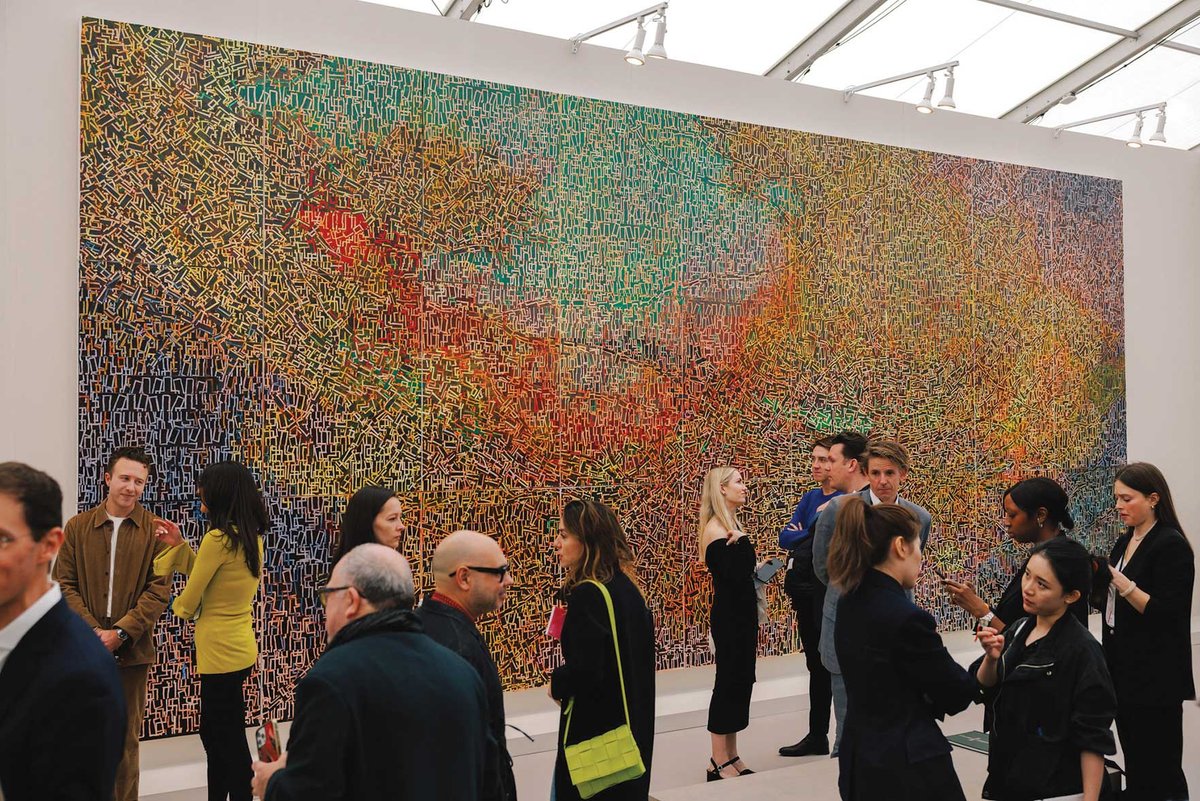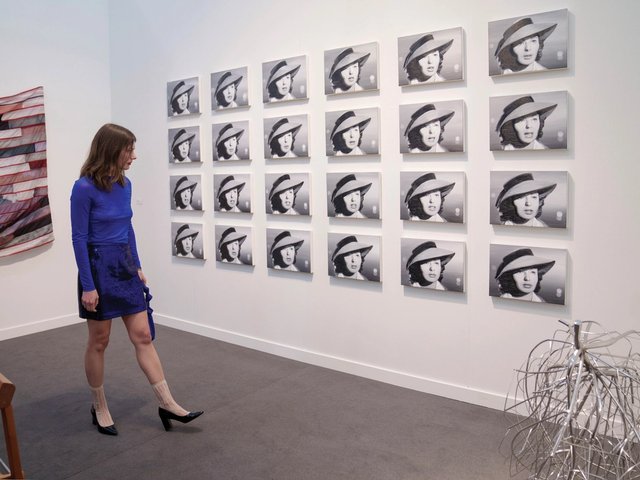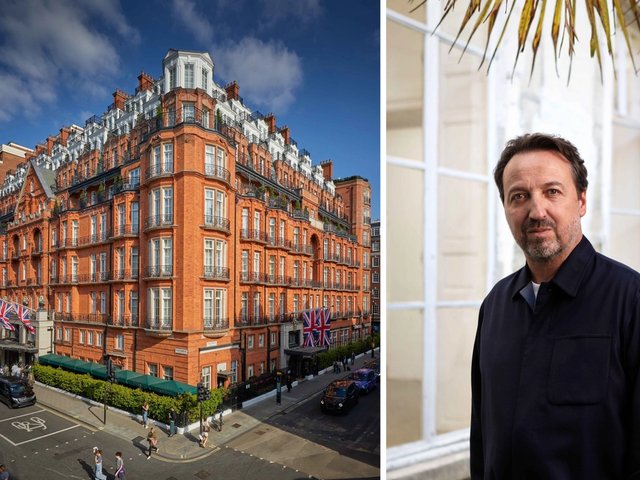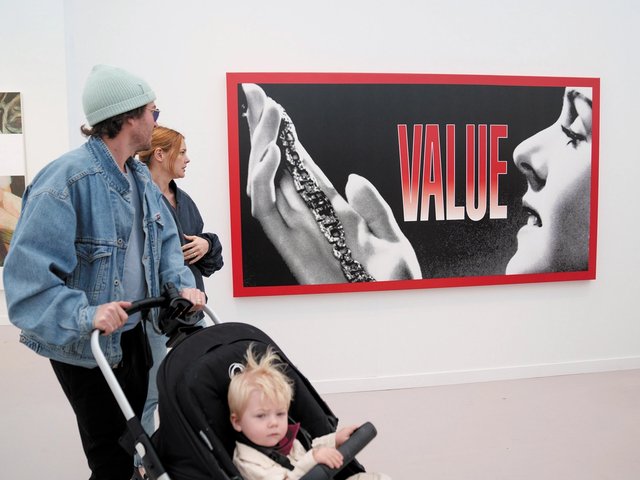Frieze Los Angeles’s return in a new calendar slot two weeks later than past editions also marks the fair’s first half-decade in the City of Angels. After last year’s test run at the Santa Monica Airport, the fair’s second outing at the vast campus boasts around 95 exhibitors, including 14 newcomers, among them the New York fixtures Kasmin, Rachel Uffner Gallery and Petzel. While last year’s edition was bigger, with more than 120 exhibitors, it also spanned two facilities at the airport, causing logistical headaches that this year have been streamlined by having all exhibitors under one roof—that of a sprawling tent designed by the architecture firm Why.
The beloved Focus sector, for galleries opened in the past 12 years, has been organised by Essence Harden, the visual arts curator at California African American Museum. This year Focus features 12 galleries, eight of which are making their first appearances at the fair, including New York’s Lyles & King, San Francisco’s Micki Meng, Oakland’s pt. 2 Gallery and the local gallery Nazarian Curcio. Almost half of exhibitors at the fair have a space in the greater Los Angeles area, yet another sign of the growing and maturing network of galleries in the city, from homegrown giants like Regen Projects, Blum and Vielmetter Los Angeles to international outfits opening local outposts such as Lisson Gallery, Gladstone Gallery, Perrotin and David Zwirner.
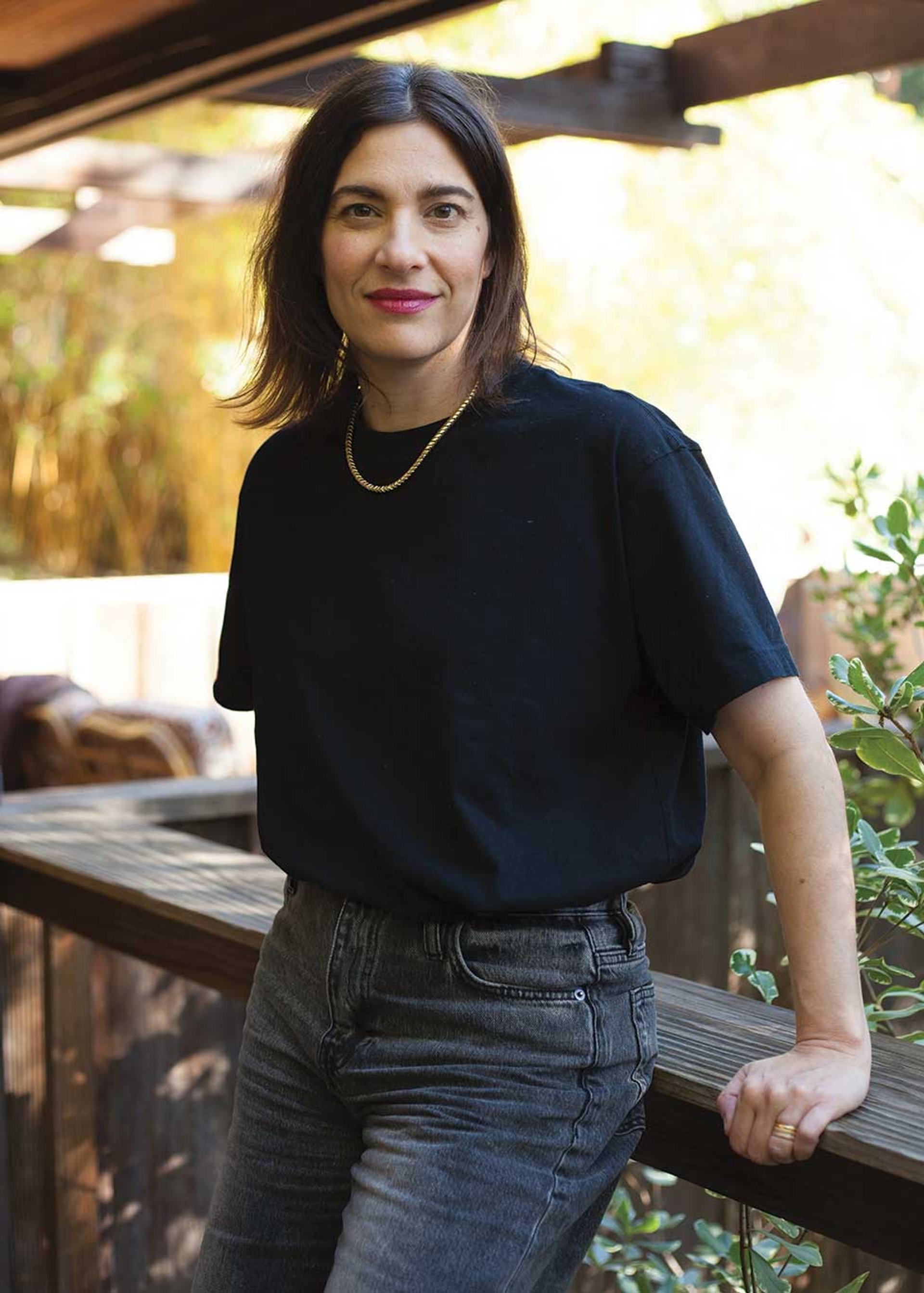
Frieze’s Christine Messineo says it is important to look beyond blue-chip galleries
Photo: Ramsey Alderson
Rather than “focusing only on the blue chips, we should look at the Los Angeles landscape more broadly, because a lot of new galleries are also opening here for the first time”, says Christine Messineo, Frieze’s director for the Americas. She cites as an example the New York dealer Emma Fernberger, who inaugurated her eponymous gallery in Melrose Hill last month with a solo show by the New York-based painter Nicole Wittenberg. Another very new local darling, Babst Gallery, is also on Messineo’s radar (and in the fair’s Focus sector). After launching last summer with a show dedicated to the late California-born Indigenous artist Harry Fonseca, the gallery is showing his densely coloured figurative paintings and drawings on its stand.
While local dealers are well represented, the fair’s global standing is reflected in the international spread of exhibitors, including several Asian galleries showing at Frieze Los Angeles for the first time. These include Bank and MadeIn Gallery from Shanghai and Manila’s Silverlens (which opened a New York outpost in 2022). The latter gallery will present the lens-based work of the Filipina artist Stephanie Syjuco, focused on the archive of the Manila Chronicle, a newspaper that was shut down by the government of the Philippines in 1972.
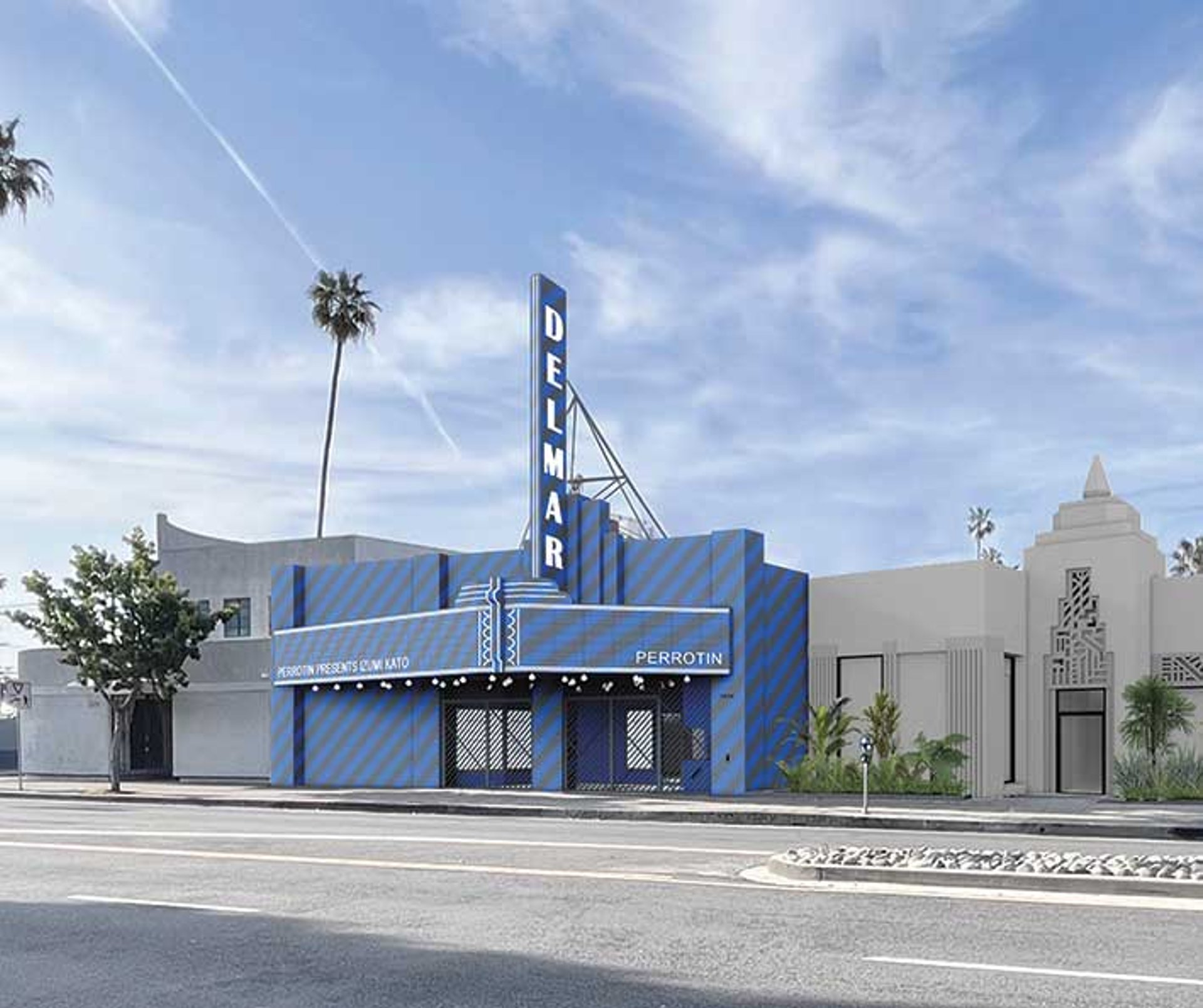
Rendering of Perrotin’s new space at Los Angeles’s former Del Mar Theater
Rendering: Johnston Marklee. Courtesy Perrotin
A Parisian in Los Angeles
The biggest global gallery making a commitment to Los Angeles beyond its Frieze stand is Perrotin. For its founder, Emmanuel Perrotin, the West Coast market holds opportunities and risks. “Everybody in the art world is so secretive about a certain market,” he says. “We still open a gallery to actually figure out a specific market and discover whether this was a mistake or not.”
After a soft launch last year with a screening of Jesper Just’s moody video installation Interfears (2022), featuring the actor and collector Matt Dillon, Perrotin’s new location at the former Del Mar Theater opened yesterday with a solo show by the Japanese artist Izumi Kato. Perrotin hired Jennifer King, the long-time Los Angeles County Museum of Art curator, as the outpost’s director. He also notes that several of the artists his gallery works with have ties to the film industry, from JR’s collaborations with Agnes Varda and Robert De Niro to the cinematic efforts of Daniel Arsham and Takashi Murakami.
Locals grow up
Another signal of development in southern California’s art market, according to Messineo, is the expansion of local galleries to other parts of the city. She cites François Ghebaly as an example: the veteran downtown Los Angeles dealer opened a space in Hollywood during last year’s fair (as well as a small New York space two years before). “Because of these new entrants, the local hierarchy of galleries is reshuffled, and this certainly presents its challenges for galleries like ours, but we’re definitely ready and looking forward to the new city environment,” Ghebaly says. Frieze is crucial, he says, because it “fills the void of a global impact moment on the art calendar”.
Another local mainstay, Night Gallery, doubled its space in 2022 with the addition of a 14,000 sq. ft outpost. “Any gallery can have a footprint in Los Angeles if they purchase a space here, but their presence is only as meaningful as their interactions with the artists, galleries, collectors and museums who have dedicated themselves to the city for ages,” says Davida Nemeroff, Night Gallery’s owner. The gallery’s stand at Frieze Los Angeles pairs local artists with others from the East Coast: Hayley Barker’s paintings of West Coast gardens and Josh Callaghan’s sculptures of objects he finds on the streets of Los Angeles sit alongside Cynthia Daignault’s 24 paintings of the finale scene from the classic Hollywood film Casablanca (1942) and Carla Edwards’s quilts made from discarded American flags.
And though Frieze has recalibrated its approach to Santa Monica Airport, one feature of its first outing is back in full force: outdoor installations and programming. Frieze’s Art Production Fund has organised a series of interventions that include projects by Sharif Farrag, Derek Fordjour, Pippa Garner, Matt Johnson, Cynthia Talmadge and Ryan Flores. Through a new collaboration with the City of Santa Monica, works by Johnson and Talmadge will remain on view after the Frieze tent comes down (until 7 April).

This year’s fair will again optimise its outdoor space
Photo: Casey Kelbaugh. Courtesy Frieze
“This is a centre for community gathering with three athletic fields, a public park and artists’ studios,” Messineo says, adding that Frieze is eager to contribute to “this growing canvas of an art community”.


